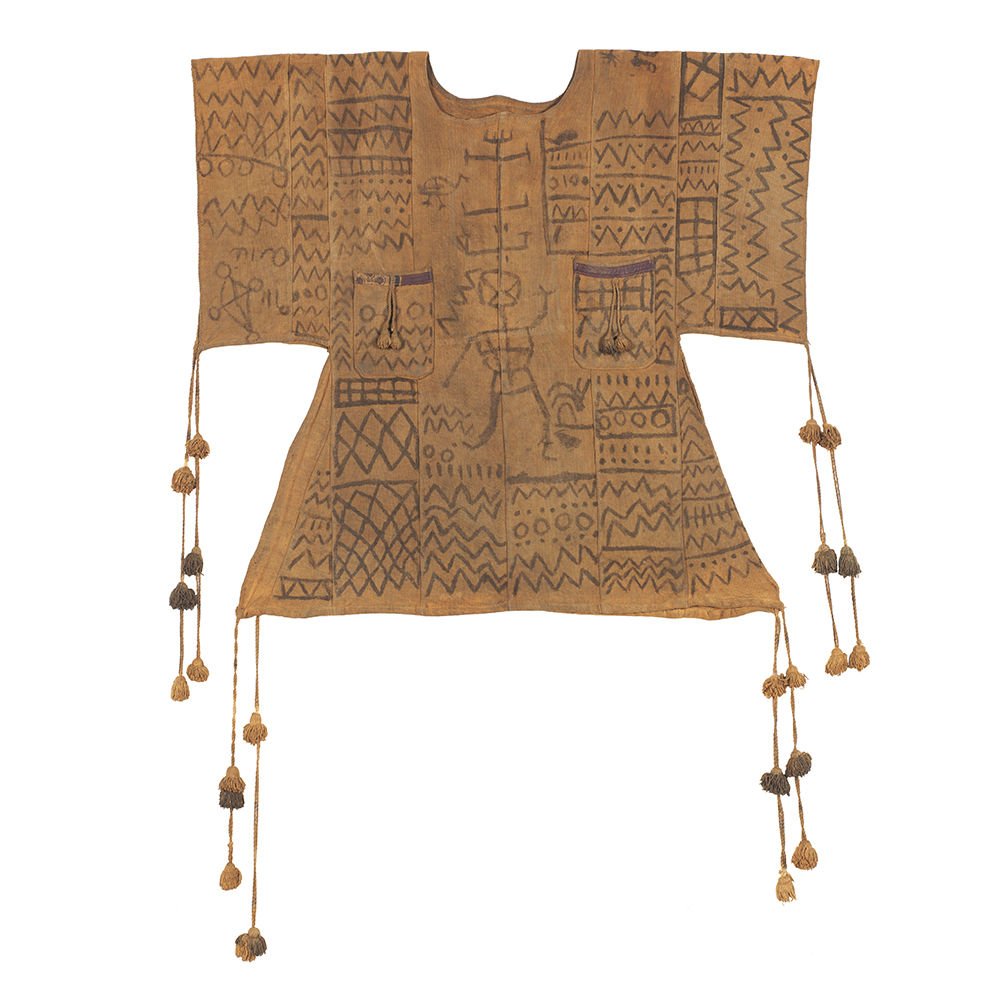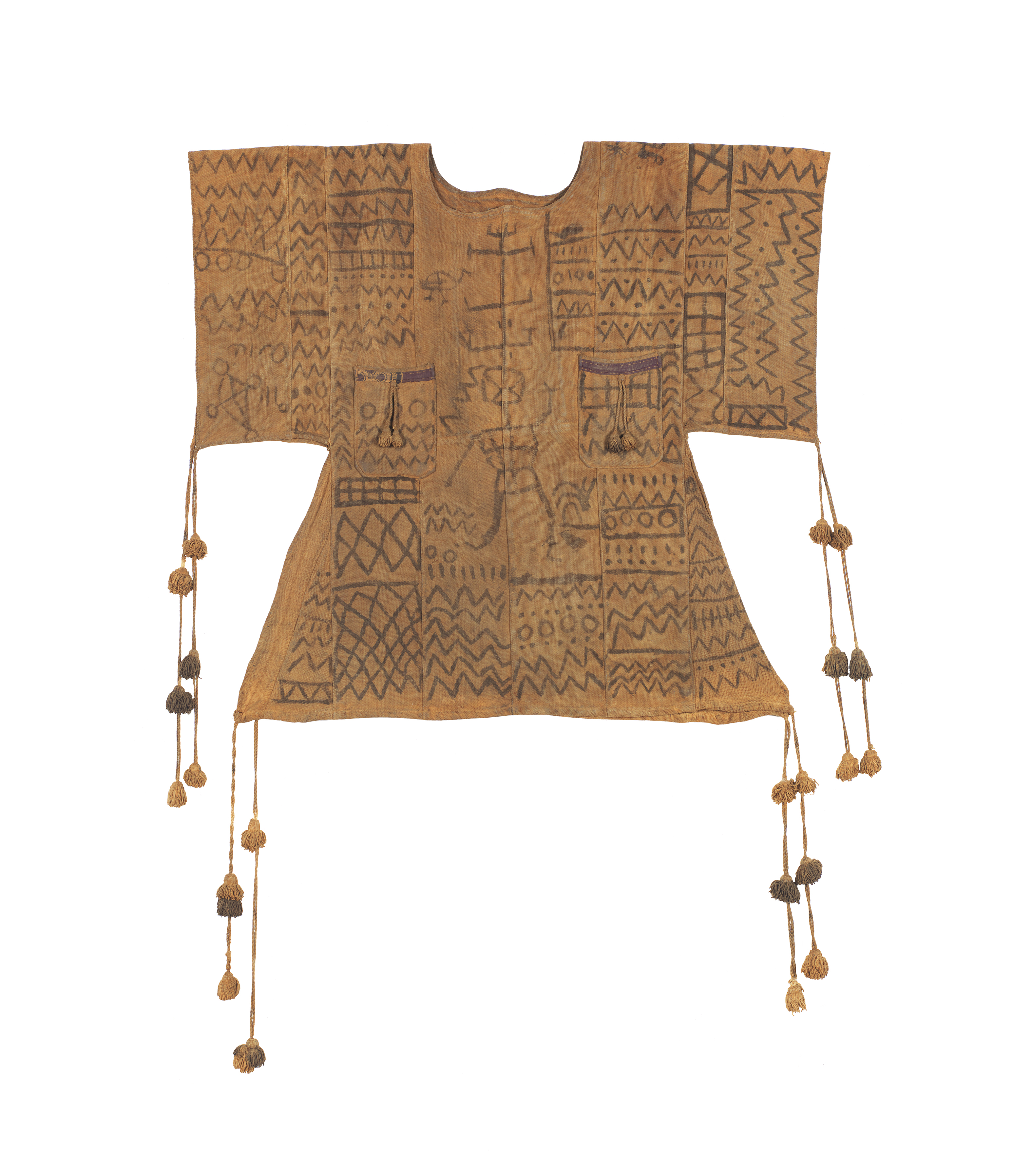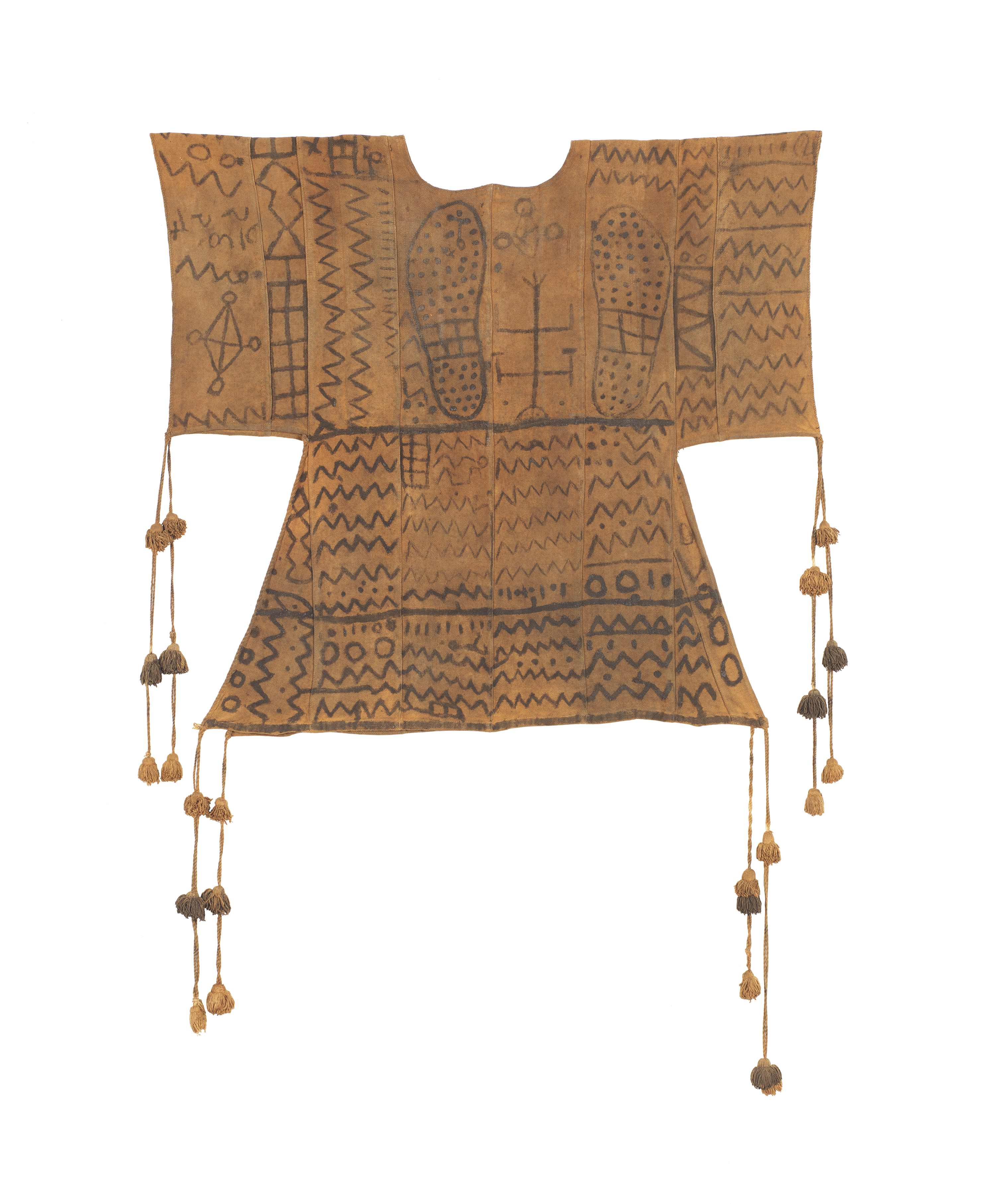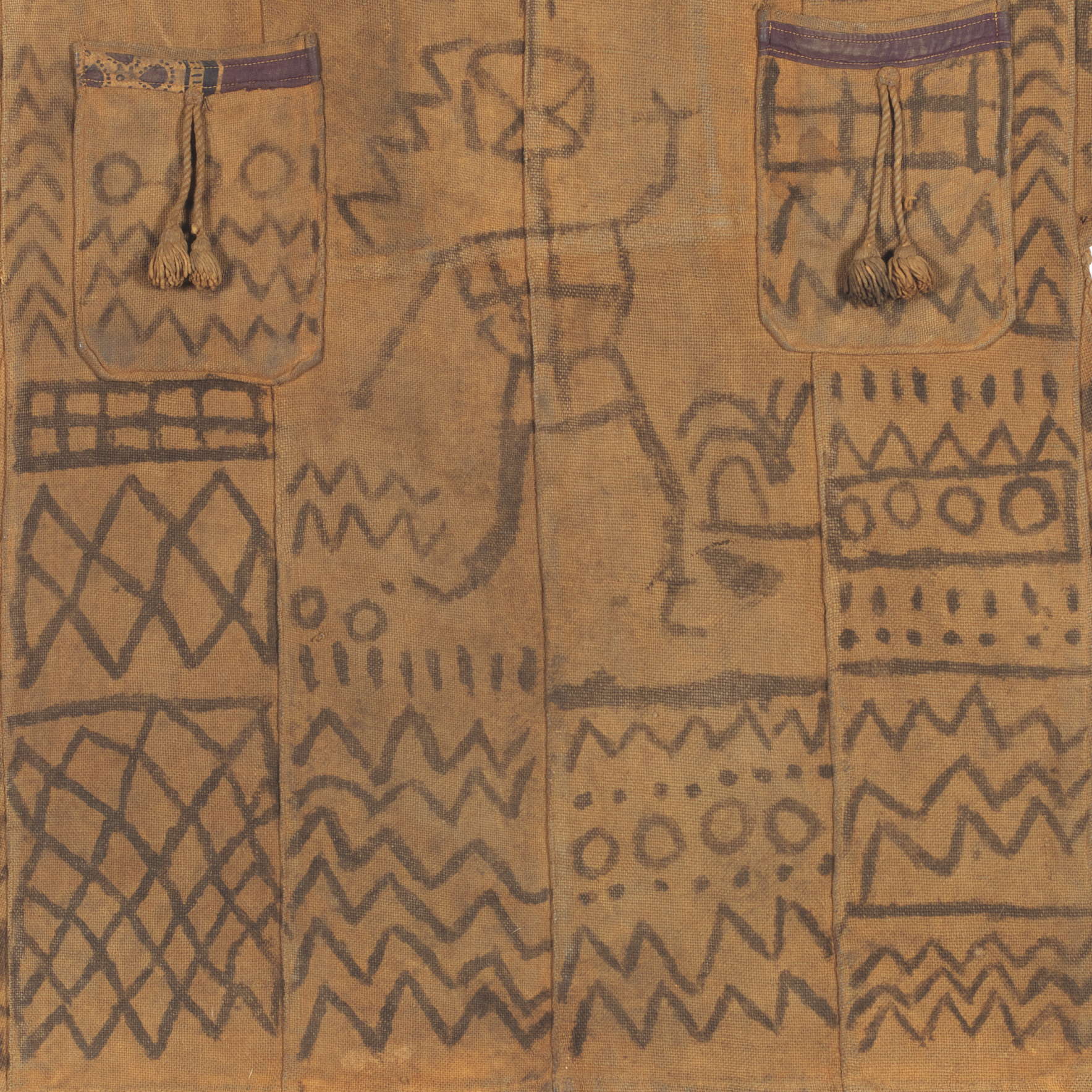Dogon Ritual Tunic
Mali
20th century
Cotton strip weave, dyed and painted
40 x 34 inches (102 x 86.5 cm) not including tassels
Provenance: a New York collection
The unusual shape of this tunic is known from early historical examples; the style survived among the Dogon into the 20th century. The texture and color of the cloth is very similar to the cotton weave that Bamana artists use as a surface for bogolanfi cloth which are known for its language of black and white graphic symbols. Unlike the bogolanfini, which are stamped, stenciled or resist-dyed, this tunic was painted freehand with a lively pictographic design.
The textile is conceptually related to West African traditions of shaped tunics, sometimes called “war shirts” (Schaedler 1987) or “charm gowns” (Picton and Mack 1979), which were painted with Islamic calligraphy and other inscriptions (and sometimes had applied leather amulets or magical talismans). The design is much more pictorial than those shirts, incorporating figurative motifs among the dynamic zigzag patterns. A dancing or gesturing human figure wearing an outsized headdress, is depicted on the front, along with a small motif at his feet that seemingly represents a chiwara ritual object. The back of the shirt is dominated by a very surprising set of foot or shoe prints. The quartered, looped diamond placed at the edge of one sleeve is the kind of cosmological and protective “magical square” motif that is widespread in African Islamic design.
This textile will be featured in our forthcoming 2019 catalogue of textile art.
Price on request












